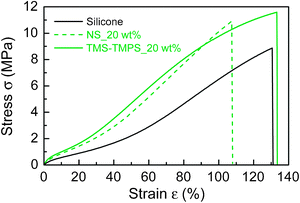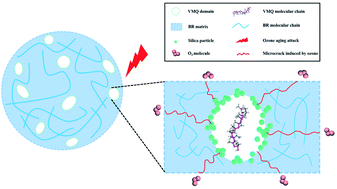Tires whether using a proven industry standard such as hi sil highly dispersible silica hds or game changing agilon performance silica global tire makers have relied on our reinforcing fillers for decades to redefine the boundaries of the industry s magic triangle from decreasing rolling resistance to improving treadwear and wet traction ppg s precipitated silica products.
Silica filler for silicone rubber.
It has a bet surface area of 185 260 m 2 g a ctab surface area of 100 160 m 2 g a bet ctab ratio of 1 2 2 6 and a conductivity of 250 μs cm.
In this paper the silicone rubber filled with silica in a wide volume range was measured in order to study the effects of filler loading on the mechanical properties of silicone rubber.
Hdk pyrogenic silica improves the performance stability and handling of your systems and formulations at all phases of production and processing.
Silicone rubber is an elastomer rubber like material composed of silicone itself a polymer containing silicon together with carbon hydrogen and oxygen silicone rubbers are widely used in industry and there are multiple formulations.
Provided is a hydrophilic precipitated silica which is well suited to use in silicone rubber formulations rtv 1 rtv 2 htv and lsr particularly well suited to use in htv silicone rubber formulations.
Hdk is ideal for adjusting the flow properties of liquids and giving powders optimum free flow properties.
These bonds are responsible for the high reinforcing potential of the silica silane filler system.
Moreover an adsorption layer called bound rubber or immobilized layer filler gel is believed to form on silica aggregation eventually composes a reinforcement filler network.
In the present work two secondary fillers organoclay nanofiller and n134 carbon black were added to silica based natural rubber compounds at a proportion of silica secondary filler of 45 10 phr.
As a silicone rubber filler precipitated silica is an alternative to fumed silica in silicone rubber compounds by reducing cost and process inefficiencies.
Trialkoxy silyl group builds stable siloxane bonds filler modifier rubber active group reacts with polymer during vulcanization and develops covalent filler rubber bonds.
The amount of the filler present in the compound has an impact on the bulk density which is why it is necessary to find the optimal value without sacrificing the inherent low density of the silicone rubber.
In order to provide complete functionality this web site needs your explicit consent to store browser cookies.
The compounds were prepared with variable mixing temperatures based on the mixing procedure commonly in use for silica filled nr systems.
Both chemical reactions have to be carefully controlled.
In figure 1 the stress strain curves of a liquid silicone rubber are shown with different quantities of fillers.



















